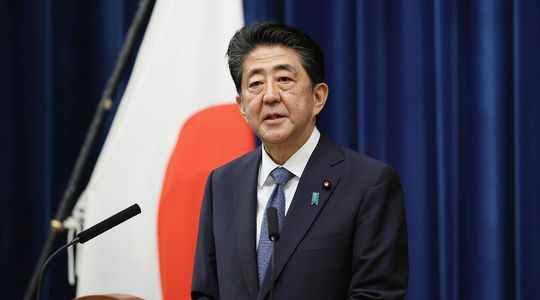This Friday, July 8 was to be one of those dismal campaign days in Japan. Two days before the vote, the candidates roamed the streets in their small trucks, haranguing the voters, awaiting a vote again characterized by abstention approaching 50%. In Nara, in western Japan, former Prime Minister Shinzo Abe was to give a public speech to support the local candidate of his formation, the Liberal Democratic Party, the ruling LDP. Although he has not been head of government since 2020, Abe remains popular. His presence is appreciated. Tetsuya Yamagami knows it. This ex-military navy who says he is “displeased” with Abe wants to kill him. Around 11:30 a.m., armed with a homemade two-barrel shotgun, he approaches from behind and fires. Abe collapses. He won’t wake up.
The archipelago is in shock. The last time a politician was assassinated was in 1960, when a far-right activist burst onto the scene of a rally to slash socialist leader Inejiro Asanuma to death. This time, the victim is the one who holds the record for longevity at the head of a Japanese government. For nearly eight years, between 2012 and 2020, Abe presided over the destinies of the archipelago. A culmination for this heir to one of Japan’s greatest political dynasties, grandson and grand-nephew of Prime Ministers Nobusuke Kishi and Eisaku Sato, and son of the head of diplomacy Shintaro Abe.
“True Conservatives” and “Abenomics”
Shinzo is a latecomer to politics but throws himself into it wholeheartedly. As soon as he was elected in 1993 as deputy for the family stronghold of Yamaguchi (South-West), he approached the most nationalist fringe of the PLD. His ease, his successes alongside Prime Minister Junichiro Koizumi, led him in 2006 to his first term as head of government. A short-lived experience. Barely enough time to fail to manage a scandal on pensions and to suffer a defeat in senatorial elections, all accompanied by a serious crisis of ulcerative colitis – an incurable disease from which he has suffered since the age of 17 – and he is forced to leave his post.
Crossing the desert takes five years. The time to remobilize what he calls the “true conservatives” and to develop a strategy to impose a nationalist agenda, in accordance with his deep convictions. In 2012, Abe led the PLD to a landslide victory in the legislative elections. As new Prime Minister, he began eight years with highs: “Abenomics”, an economic policy combining monetary easing, budgetary stimulus and structural reforms enabled Japan to reconnect with growth. He consolidates the alliance with the United States by even becoming the first foreign leader to meet with Donald Trump, to whom he offers a gold-edged golf club. It puts Japan back on the international stage by promoting multilateralism.
And then there are lows: he finds himself confronted with influence peddling scandals and appears disarmed in the face of the Covid-19 pandemic. The coronavirus comes at a time when Abe believed he could play from the 2020 Tokyo Olympics to impose the modification of the constitution – the ultimate ambition of this nationalist with revisionist tendencies, denying the crimes of militarist Japan – a text which he considers as imposed by the Americans. His poor management of the pandemic is causing his popularity to plummet. Rectocolitis recalls to his bad memory. He has to give up again.
However, it remains popular with PLD members. Leader of the most powerful faction of the PLD, he becomes kingmaker. The current Prime Minister, Fumio Kishida, who described his assassination as an “unforgivable act”, owes him his post. The arrival of Abe was desired by the candidates for the senatorial elections, which explains his presence in Nara on July 8.
